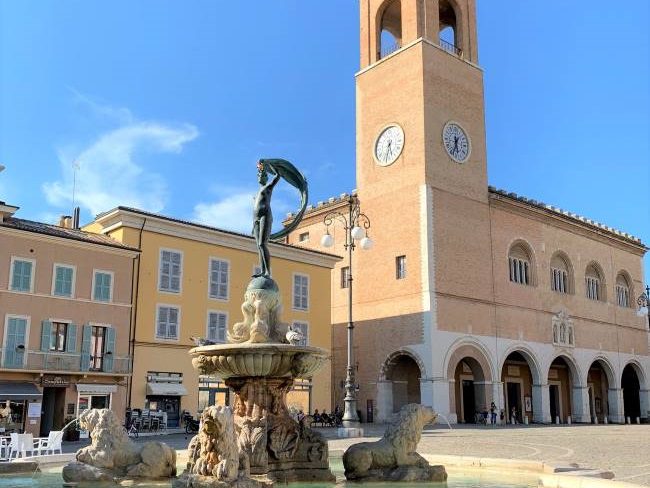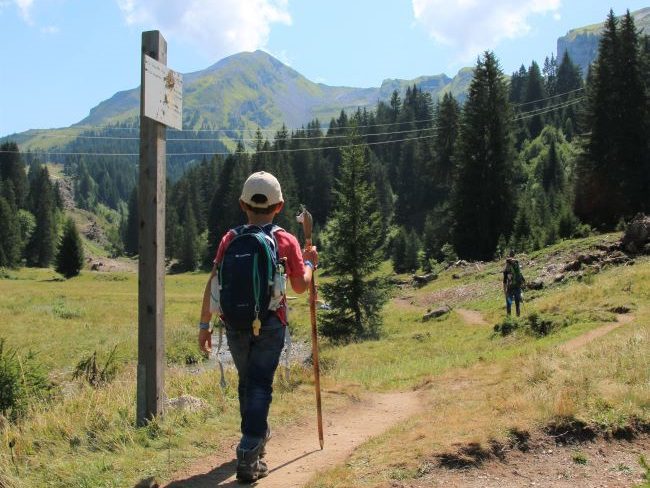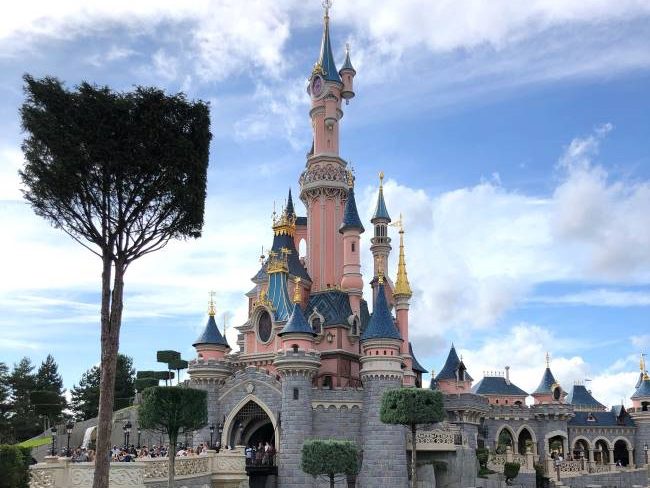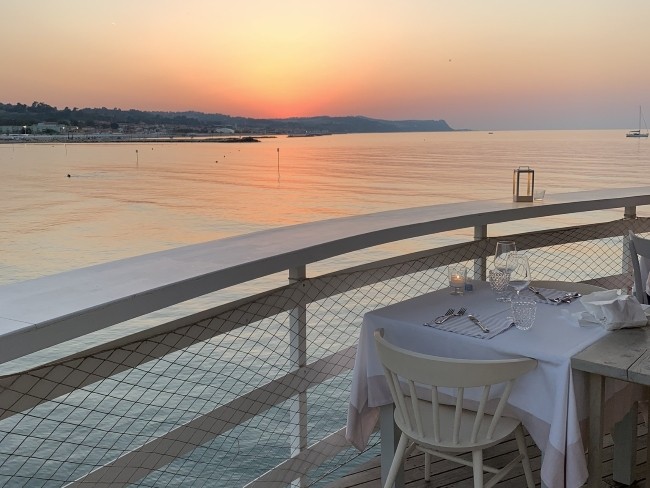Fano is a charming Adriatic seaside city and the third largest by population in the Marche region of central Italy. Learn more about Fano in this post and discover the must-see historical attractions and top things to do in Fano, Italy.
Table of Contents
Things to Do in Fano Italy
Le Marche, the region located between Emilia-Romagna to the north and Abruzzo to the south, is renown for its picturesque, hilly countryside and beautiful 180 km-long coastline.
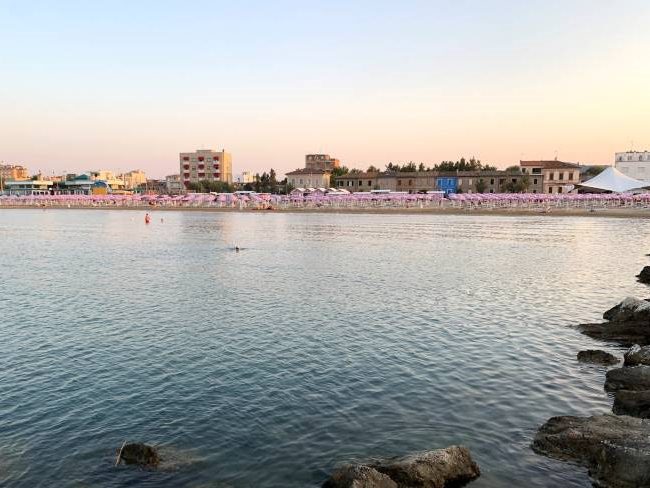
Fano is located in the northern part of Le Marche, between Pesaro (the capital of the Pesaro and Urbino province) and the beach town of Senigallia.
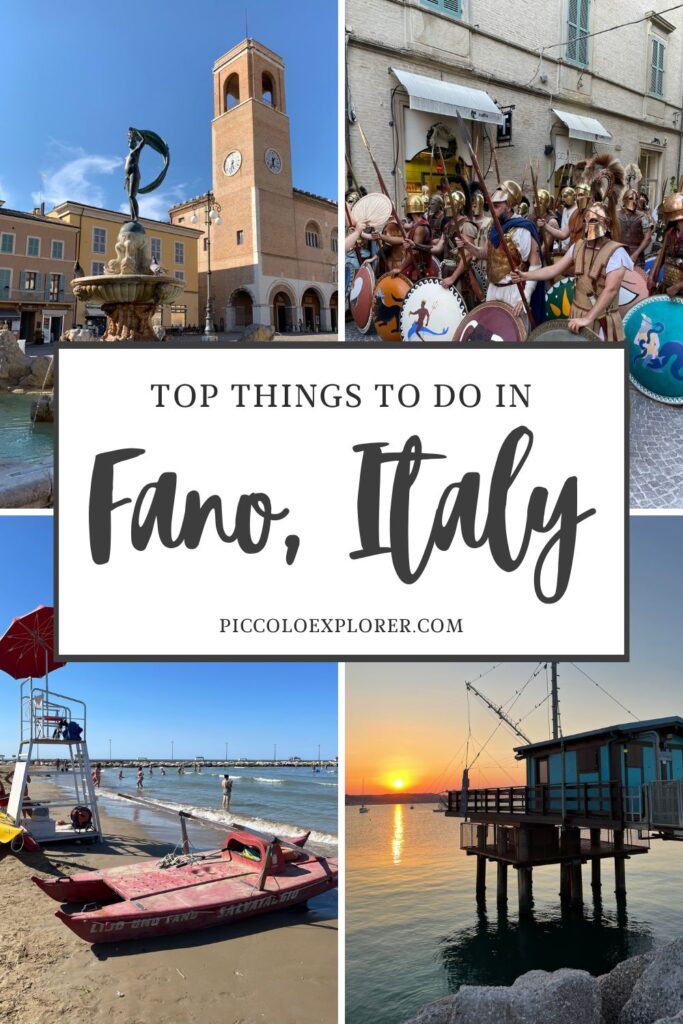
Learn more about this seaside city’s cultural and historical heritage and find inspiration for things to do in Fano Italy in this guide.
Fano Centro Storico
Fano Centro Città is the historical town centre and the primary location for special events, festivals and street markets. Most of the streets within the town centre are restricted to traffic and open only to pedestrians, cyclists and local tradesmen or residents.
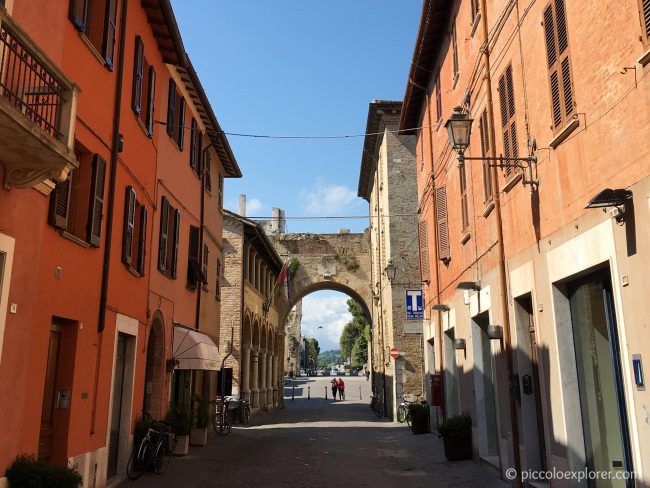
The ancient town of Fano was the largest Roman colony on the Adriatic coast as well an important port and crossroads during the time. With history dating back over 2000 years, you can still see traces of that past within the city centre.
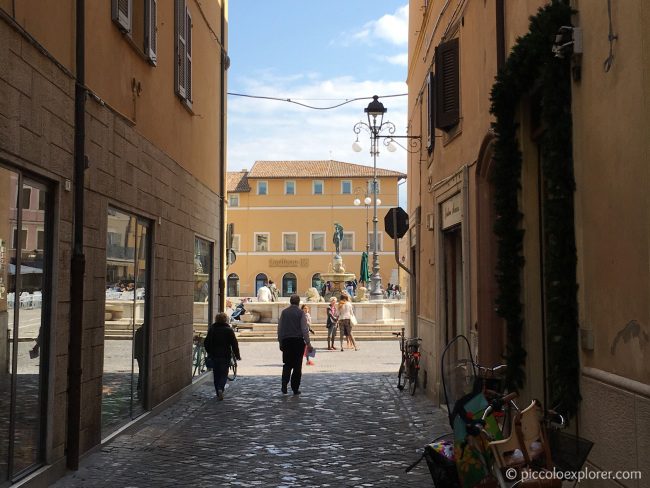
During the time of ancient Rome, Fano was given the name of “Fanum Fortunae”, after a temple to the Goddess of Fortune that once stood there. The Temple of Fortune was built in the 3rd century B.C. by the Romans in honor of their victory against the Carthaginian Asdrubal.
In the summer, Fano transforms into an ancient Roman city with the Fano dei Cesari event typically held in mid-July. Thanks to over 2000 local enthusiasts and historical re-enactors from across Italy, the city’s ancient Roman heritage is brought to life with camps, rituals, demonstrations and a spectacular chariot race.
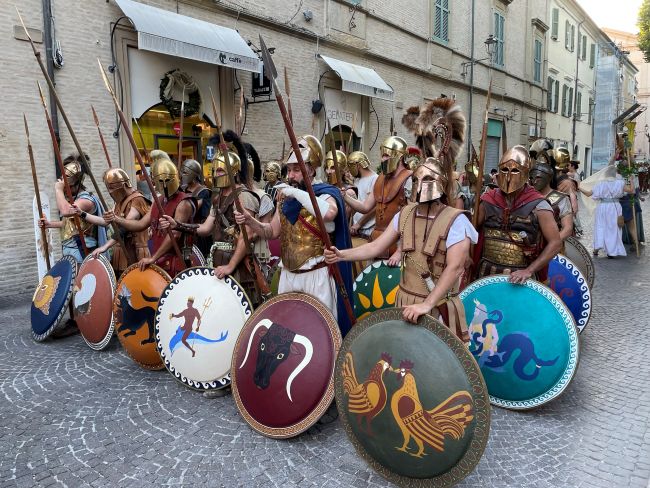
One of the first things you will see approaching the town centre of Fano is that it is partially surrounded by ancient walls. These city walls were built by the Romans and expanded in the Middle Ages by the Malatesta family, and the most prominent feature is the splendid Arco di Augusto that served as a gateway to the town in Roman times.
Arco di Augusto
The Arco di Augusto (Arch of Augustus) is a Roman triumphal arch that was built in 9 AD under Roman Emperor Augustus and marked the arrival of the Via Flaminia, an ancient Roman road, on the shores of the Adriatic Sea.
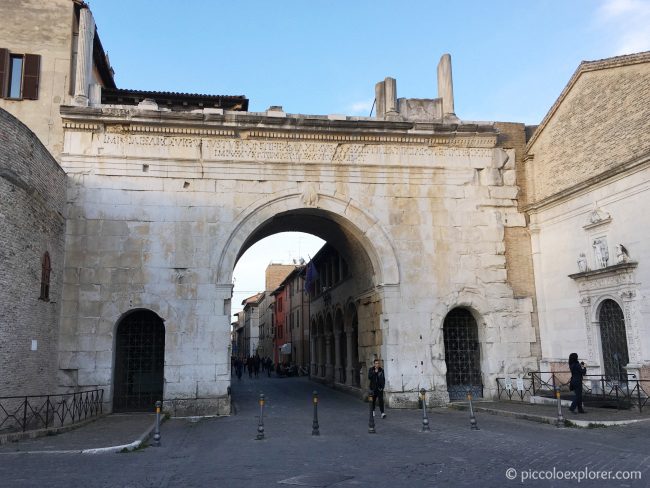
Constructed of travertine, a form of limestone, the Arco di Augusto has three openings, one that was for wagons and horses and two smaller ones for pedestrians. You can still see remnants of the top of the gate that was destroyed in battle in 1463.
Via Flaminia was the most important route to the north, leading from Rome over the Apennine Mountains to Ariminum (now Rimini). Upon entering the town through the Arco di Augusto, Via Flaminia ran on the other side of the city walls that were built to protect Fano.

To the left of the Augustus Arch, you can follow the ancient Augustan walls that surround part of Fano Centro Città to the beginning of Corso Matteotti, which was known as Cardus Maximus in Roman times. Corso Matteotti is now a mostly pedestrianised main road and another route to the historical town centre.
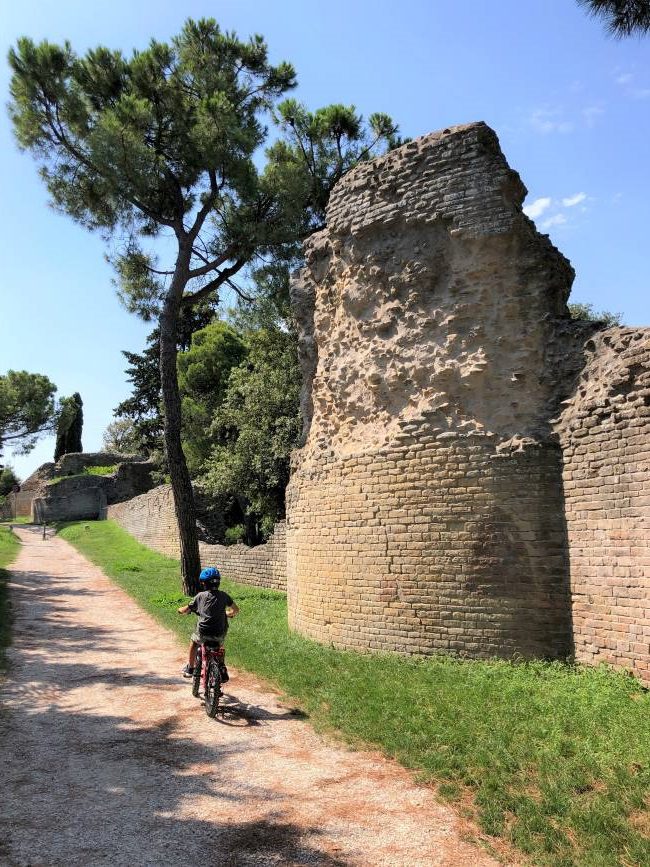
Along the way, you will come across the Porta della Mandria (Gate of the Herd) or Porta Ovest (West Gate). The name “Porta della Mandria” comes from medieval times, when livestock were brought through this gate to graze nearby. The gate was also used for people to travel out of the town towards Pesaro to the north.
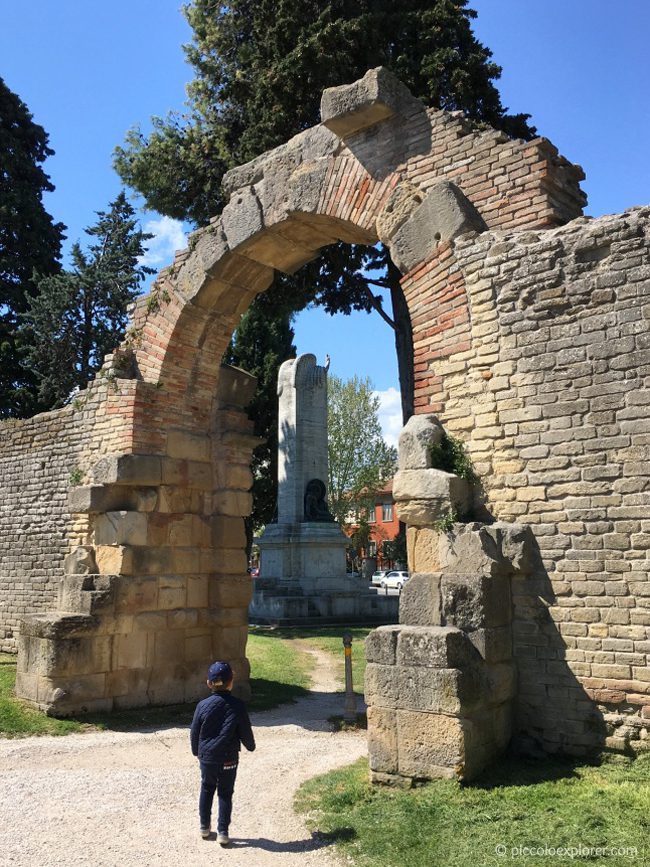
Piazza XX Settembre
Corso Matteotti is the mostly pedestrianised main road in the town centre, a bustling hub with independent shops, cafés and clothing stores that brings you straight through the city.
Fano’s main square, the Piazza XX Settembre, is located just off Corso Matteotti. Bars and restaurants line the piazza and throughout most of the year, there are tables set up for customers to catch up over coffee or drinks.
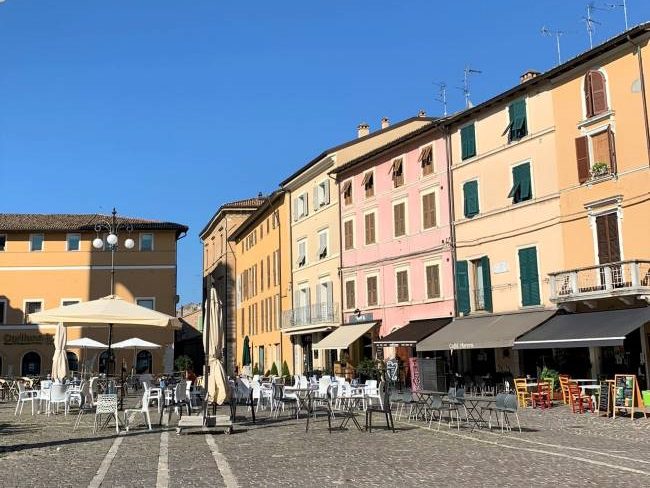
The date of 20 September, which marked the end of the Risorgimento, the long process of Italian unification, is commemorated in practically every town in Italy with streets or squares named Via or Piazza XX Settembre respectively
Teatro della Fortuna
Piazza XX Settembre is overlooked by a prominent Romanesque-Gothic style building that was originally the Palazzo del Podestà, a medieval administrative palace built in 1299.
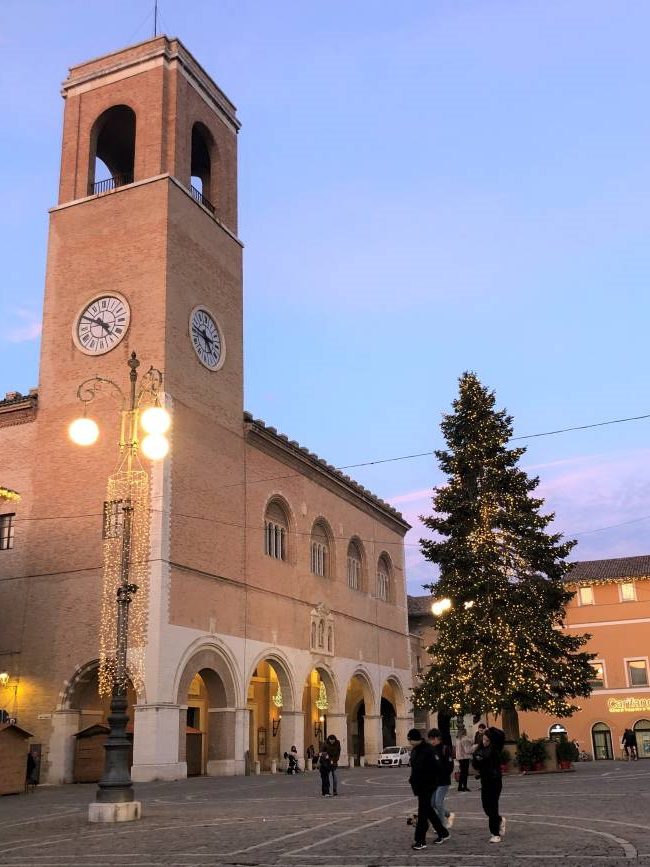
Palazzo del Podestà was converted into a theatre, Teatro della Fortuna, by the scenographer and entrepreneur Giacomo Torelli between 1665 and 1677, then rebuilt with a new opera house with a 900-seat, neo-classical style interior designed by Luigi Poletti that opened in 1863.
The theatre suffered bombing damage during World War II and underwent an extensive renovation to bring it back to its original spendour. Teatre della Fortuna re-opened in 1998, and this historic venue now hosts an array of performances, including opera, drama and dance.
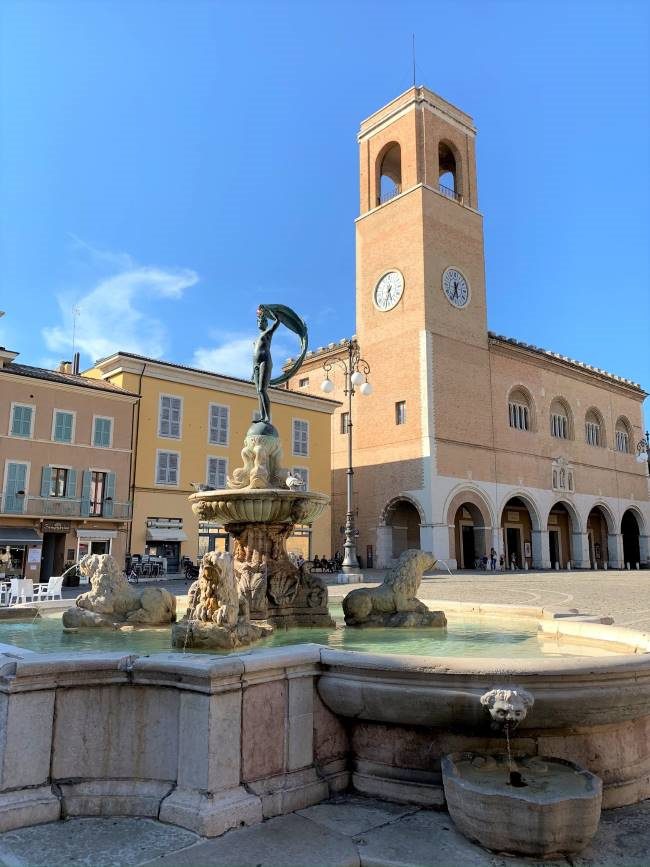
Another prominent feature and iconic Fano attraction in the Piazza XX Settembre is Fontana della Fortuna. The bronze statue on the fountain is of the Goddess Fortuna, and is a copy of the original statue that was modelled and cast in 1593 by Donnino Ambrosi from Urbino.
The original statue can be seen in the Museo Civico. The fountain consists of a large basin with coloured marble that was renovated in the 17th century by the Venetian Ludovico Torresini.
Palazzo Malatestiano
At the opposite side of Piazza XX Settembre is the Palazzo Malatestiano. The palace was the family residence of the Malatesta family that was in power from the end of the 12th century to about the mid-1400s.
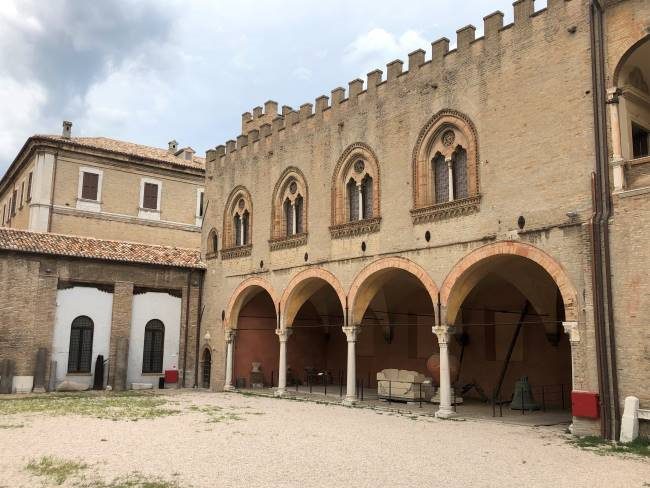
Today Palazzo Malatestiano houses the Museo Archeologico e Pinacoteca del Palazzo Malatestiano and numerous ancient artefacts in the palace court, Corte Malatestiana.

Museo Civico
The civic museum in Fano is called the Museo Archeologico e Pinacoteca del Palazzo Malatestiano. The archaeological museum and art gallery contains artefacts from around Fano dating back to prehistoric times through to the Roman period, and is divided into four main areas: the Archaeological section, the Ceramics section, the Numismatics Section and the picture gallery, the Pinacoteca.
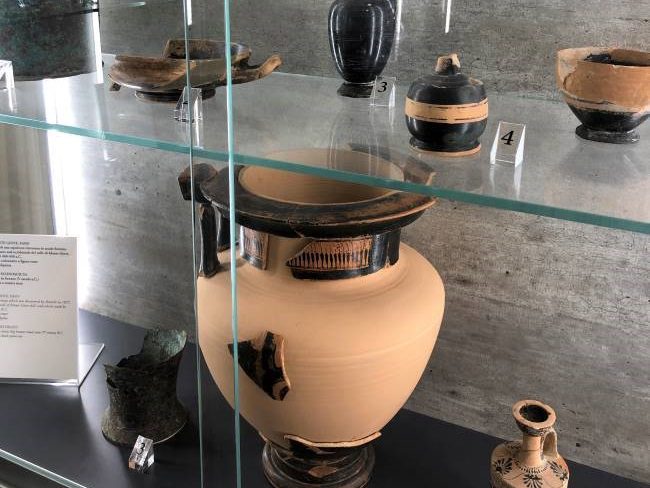
The Pinacoteca was originally commissioned by Pandolfo III Malatesti and built in the early 15th century. The art gallery consists of paintings from the 15th, 16th and 17th centuries by artists from Fano and from the schools of Bologna, Venice and Rome, as well as works of contemporary art.
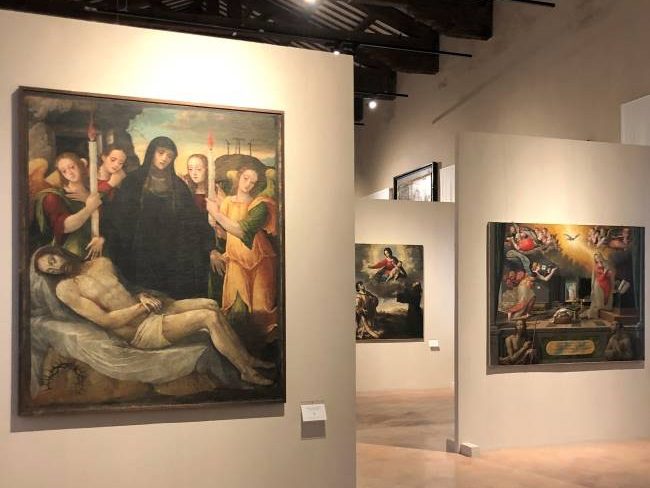
Biblioteca Federiciana
One of the hidden gems in Fano’s town centre is the Biblioteca Federiciana (Federiciana Library), a historical library established in 1681 by Abbott Dominic Federici, who housed a rare collection of books, manuscripts and maps in this library and upon his death, requested in his will that it would be left to the fathers of the Oratory of St. Pietro in Valle and opened to the public.
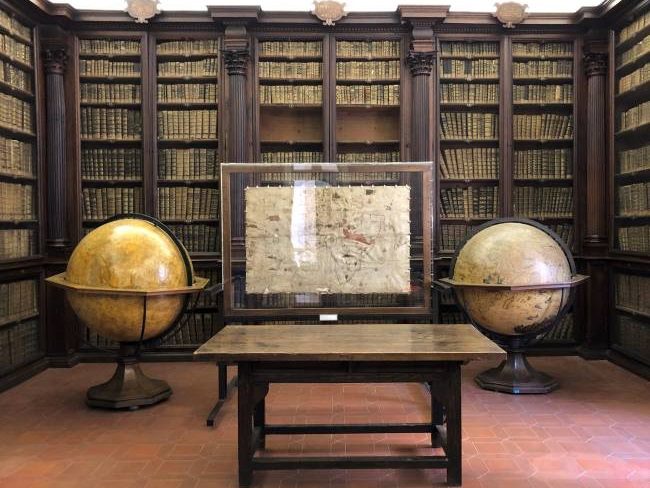
Today Biblioteca Federiciana Fano has a vast collection that includes ancient and modern works, prints and drawings, musical collections, atlases and geographical texts and thousands of volumes from the 15th, 17th and 18th centuries.
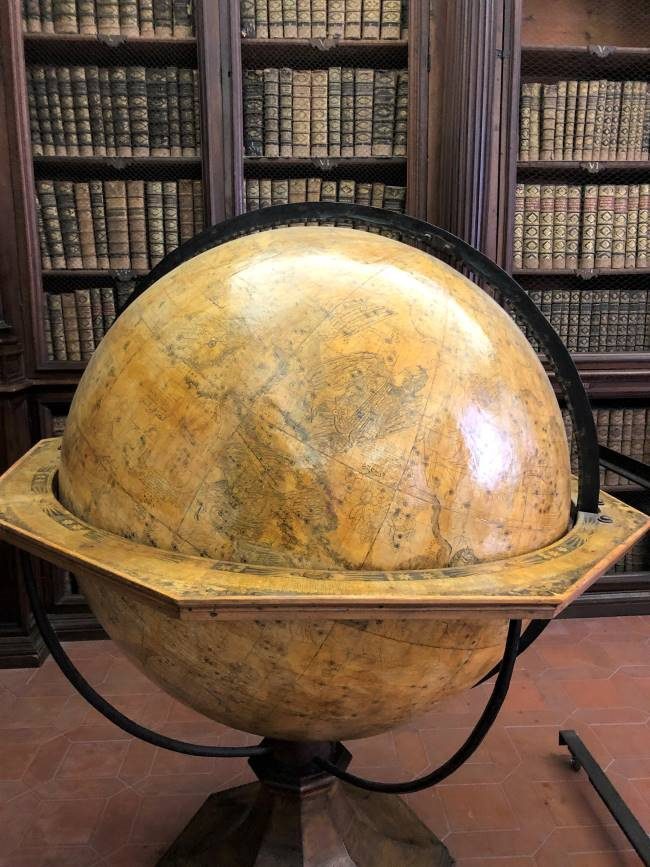
The Sala dei Globi (Room of Globes) within the library features a pair of splendid terrestrial and celestial globes that were created for Abbott Federici by geographer and cosmographer Vincenzo Coronelli in 1688, shown with a great navigation paper designed by Visconte Maggiolo in 1504, one of the few still existing.
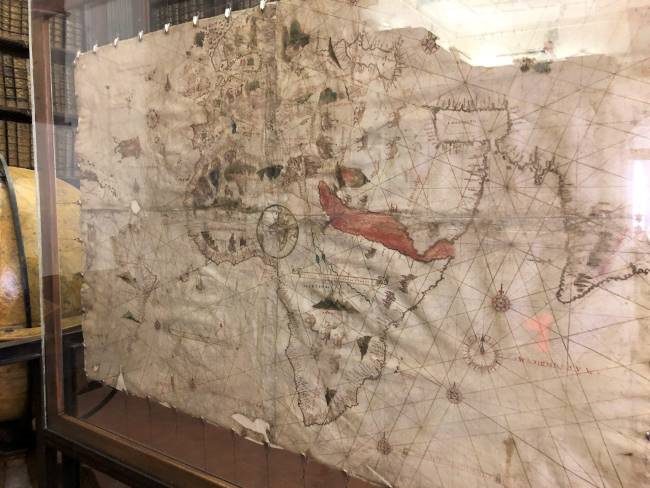
Rocca Malatestiana
One of the main monuments and key attractions in Fano is Rocco Malatestiana, an imposing medieval and Renaissance fortress located at the northern corner of Fano’s Roman wall.

The enormous and well-preserved fortress was built in the 15th century and regularly hosts cultural and musical events throughout the year.
Fano Markets
There are Farmer’s Markets, street markets and Fish Markets running regularly in the Fano historical centre. On Wednesdays and Saturdays, the main pedestrianalised roads and squares in the Fano city centre are lined with street vendors selling clothing and shoes, home goods, gadgets and plenty more at bargain prices.
Most mornings you’ll find the Farmer’s Market open in Piazza Andrea Costa, a short walk from Piazza XX Settembre, with several stands offering a selection of fresh fruit and vegetables.
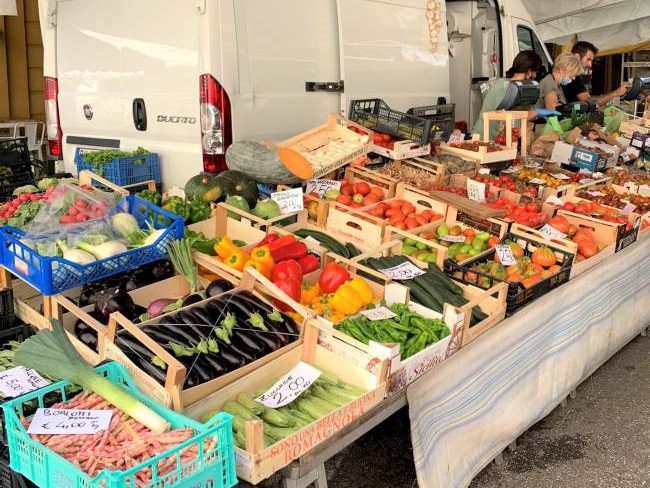
Also in Piazza Andrea Costa, is Fano’s famous covered fish market, Mercato Ittico, which is open Tuesdays to Saturdays, from 0730 to 1330. 12 pescherie (fishmongers) sell a wide range of freshly caught fish and seafood brought into the Porto di Fano.
Porto di Fano
Fano has served as a port since Roman times, and today Porto di Fano is one of the most important Adriatic fishing ports. The port of Fano sits between the town’s Lido and Sassonia beaches and the touristic port, Marina dei Cesari.
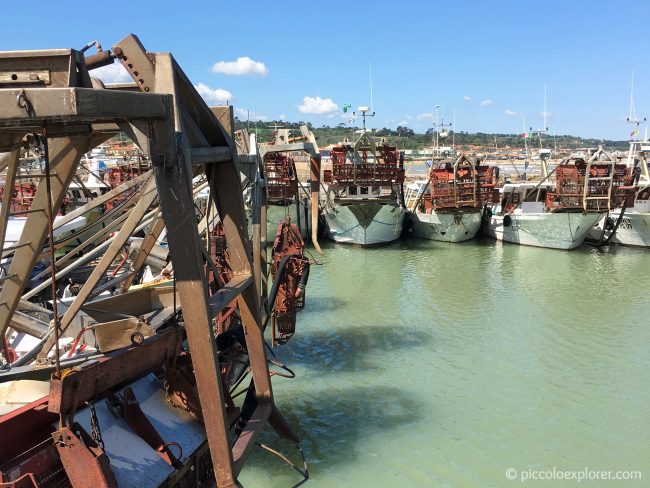
Locals often come to the port of Fano first thing to buy seafood when the fishermen are just returning with their catch.
Moretta Fanese
A traditional drink that you must try when visiting Fano is the moretta coffee. Moretta is made with three different liquors – anise, rum and cognac – and lemon peel. Each bar has its own special recipe, and one of the best places for a moretta is the Caffè del Porto, located right across from the fishing boats.
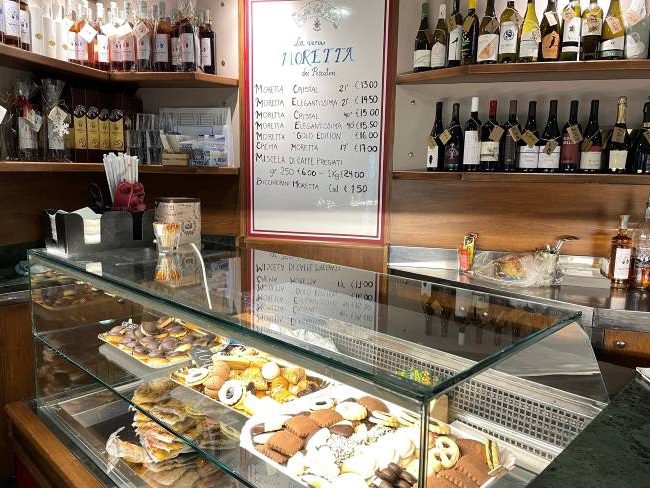
The moretta fanese is typical to Fano and is said to have originated as a popular drink for local fishermen to get through the cold and windy days at sea.
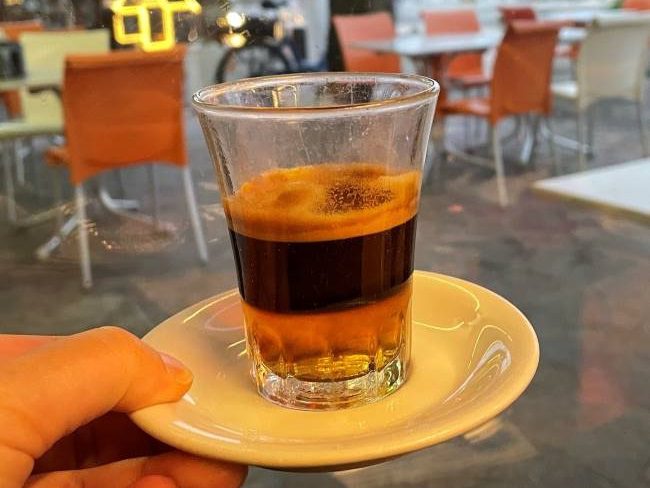
You can also purchase moretta liquor blend to try your hand at creating the moretta drink at home. Local shops and bars selling moretta liquor include Caffè del Porto, Bon Bon Art Café in Lido and L’enoteca Il Buongusto in Fano Centro Storico.
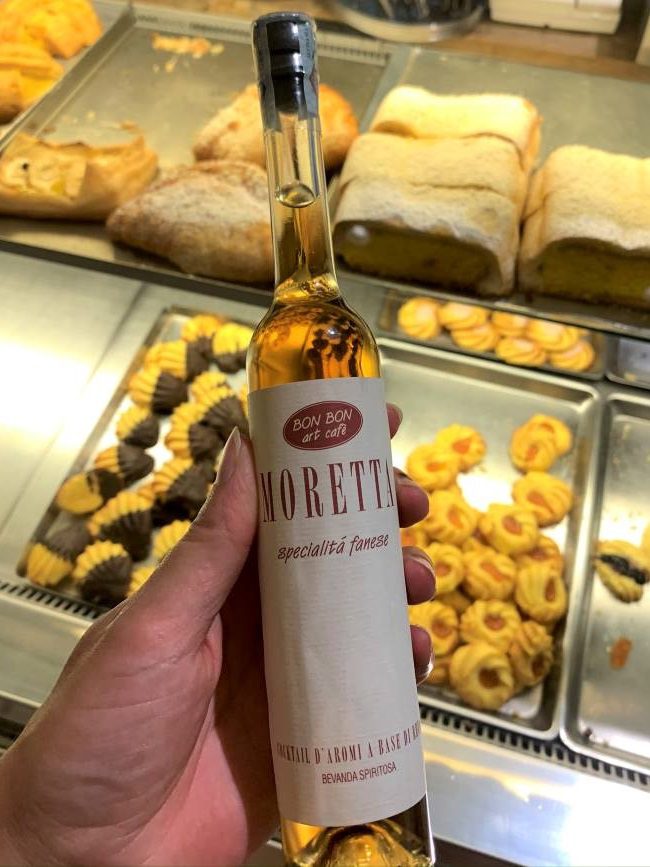
El Gugul
Near the Porto di Fano and tucked away from Lido promenade, there is a neighbourhood called El Gugul, with picturesque, narrow roads and quaint, traditional fishermen’s homes marked with maritime flags.
“El Gugul” comes from the name of a funnel-shaped fishing net (gugullo) that was used to block the shallow waters and trap fish and eels in a series of successive nets.

El Gugul is a lovely area to explore part of Fano’s maritime past, with brightly coloured, restored buildings decorated with objects that highlight the area’s seafaring traditions. Many of the names shown on the walls outside of these homes are the names of old fishing boats.
Fano Trabucchi
One of the characteristic sights to see on Fano’s coast are the well-preserved trabucchi, or fishing huts, that line the end of the main pier.
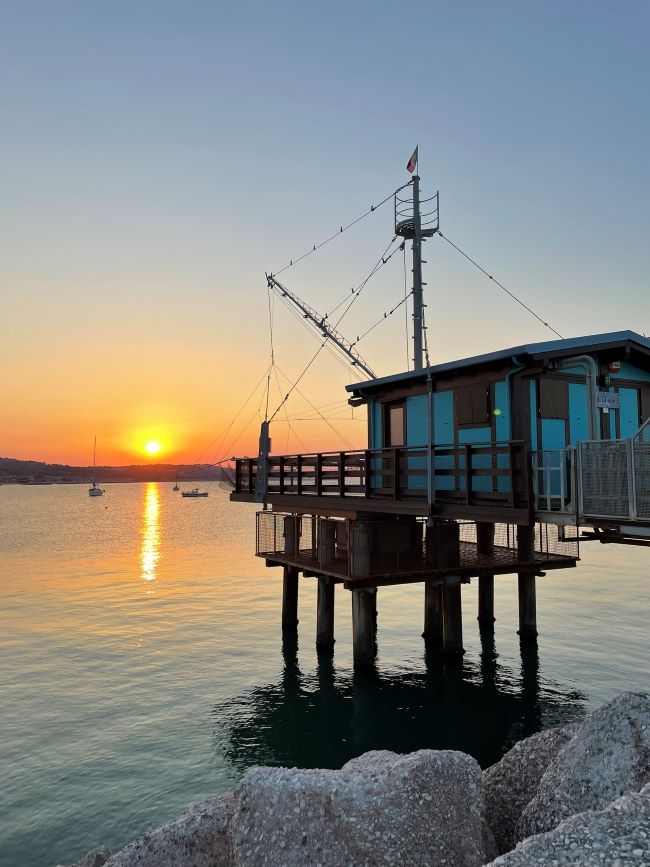
The trabucco is an ancient fishing machine, on large wooden structures on stilts, that is typical of the Adriatic coast.
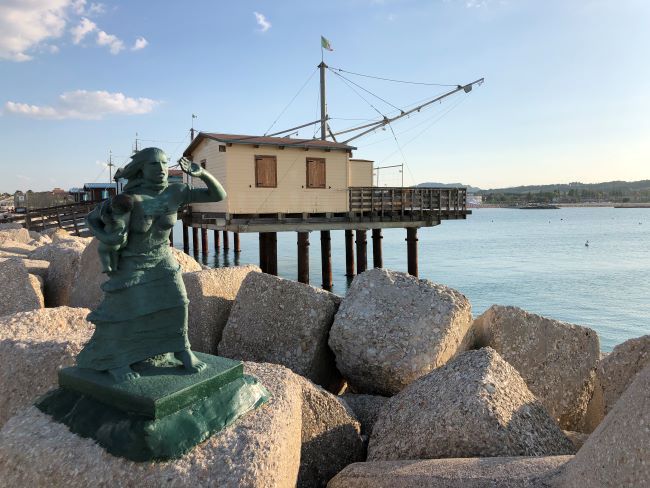
At the end of the pier, you will see a bright green lighthouse as well as the statue “La Tempesta” by Getulio Roberti dedicated to the fallen at sea.
Fano Beaches
The region of Le Marche boasts one of the highest number of Blue Flag beaches of any region in Italy, three of which are in Fano. The prestigious Blue Flag is an important “eco-label” awarded by the Foundation for Environmental Education to environmentally well-kept beaches across Europe that meet strict criteria including water quality, environmental management, safety and other services.
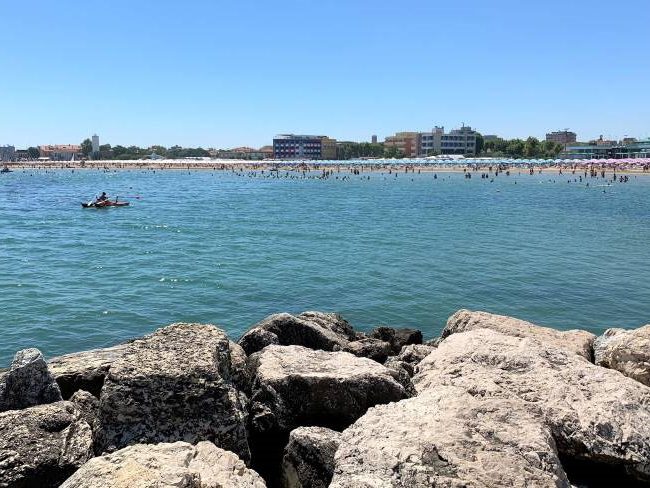
The three Blue Flag beaches in Fano are the North Beach, Sassonia Beach and Torrette Beach, located south of the city centre.
Lido Beach
One of the most popular beaches in Fano is Lido, where the sandy beach near a lively promenade is set up with rows of umbrellas from May to early September.
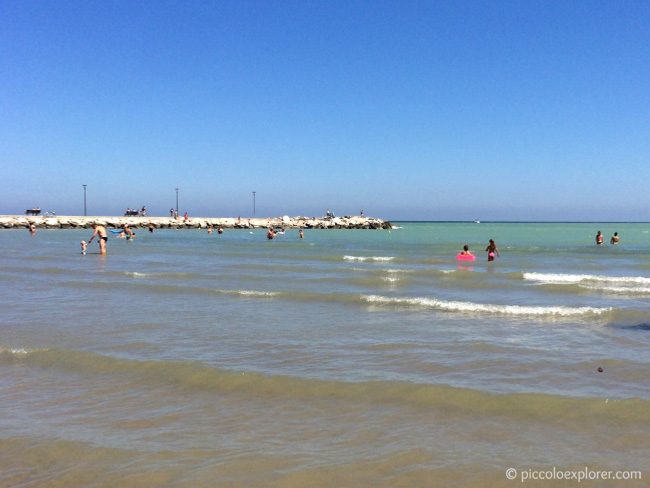
Lido Beach is protected by two jetties on either side which create a calm beach environment, that coupled with the shallow waters make it ideal for families. There are several bagni along Lido Beach, where customers can hire a space on the beach with an umbrella and chairs by the day, week or for the full summer season.
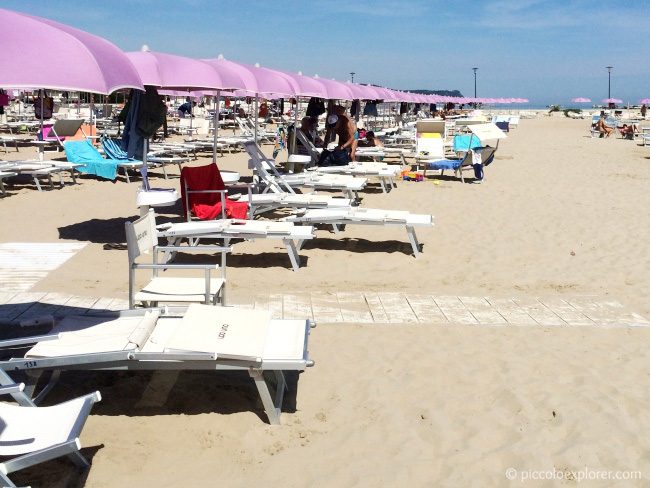
The bagni provide services that include food and drink bars, toilets and outdoor showers, beach huts for hire and often pedalos and outdoor sports facilities.

Lido Promenade
The Lido promenade is a busy spot with children’s playgrounds and summer fun fair, several bars, cafés and restaurants, shops selling beach gear and a regular programme of festivals and street markets.
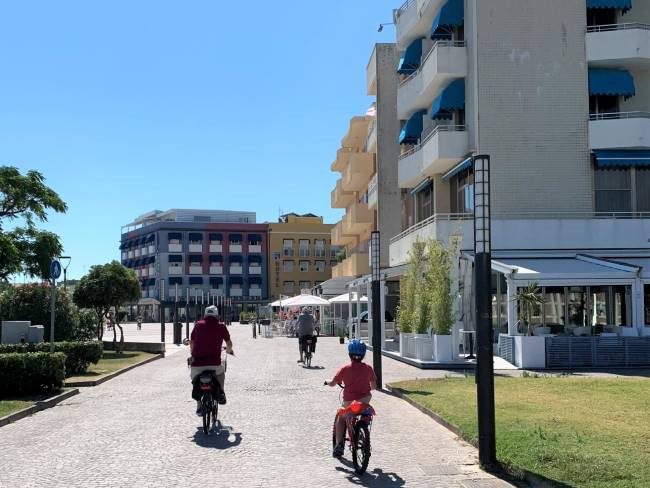
One of the best places for gelato in Fano is Bon Bon Art Café, also popular for its pastries, cakes and cocktails.
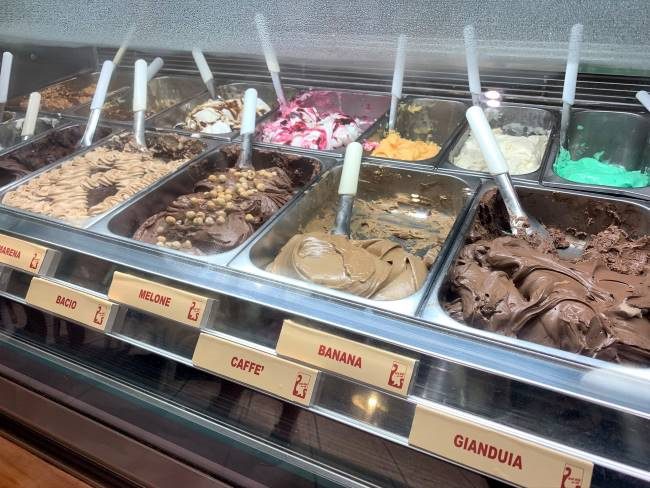
Sassonia Beach
South of Lido and Fano’s port and marina is Sassonia, named after its pebble beach and one of Fano’s Blue Flag beaches. Sassonia is a popular spot for kayaking, windsurfing and kiteboarding.
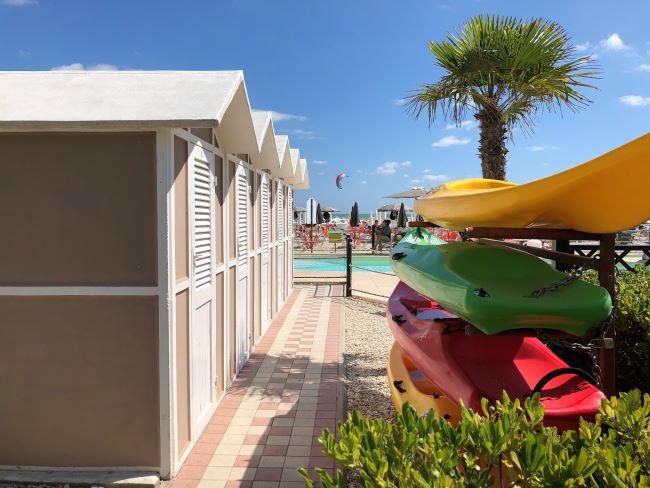
There are several sports facilities at Sassonia Beach, including tennis and volleyball courts and outdoor swimming pools.
Fano Restaurants
In this section, I will share our favourite restaurants in Fano, from casual pizzerias to fine dining experiences. You can find more food photos and information on each restaurant on my Best Restaurants in Fano Italy post.
Osteria al 26
Via Gasparoli, 59, 61032 Fano | facebook.com/osteriaal26
Osteria al 26 is a local favourite and one of our top restaurants in Fano, conveniently located a short walk from Piazza XX Settembre in the city centre. This charming restaurant serves up delicious local specialties and grilled meat dishes.
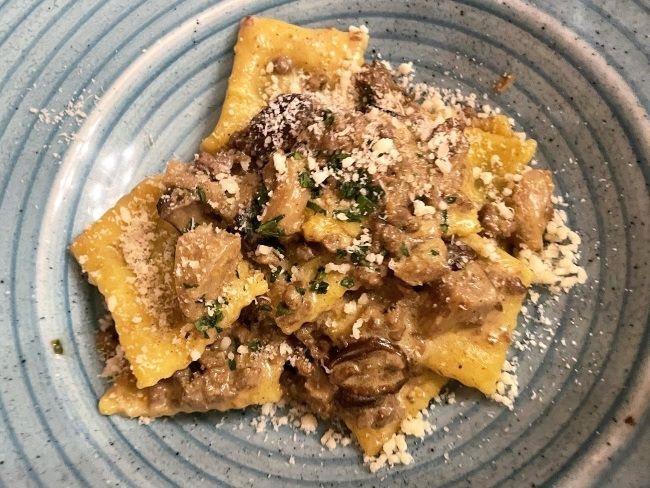
I can highly recommend Osteria al 26 for the lovely ambience, the consistently great food and extensive wine list. Osteria al 26 Fano is also a dog-friendly restaurant.
View the menu at Osteria al 26
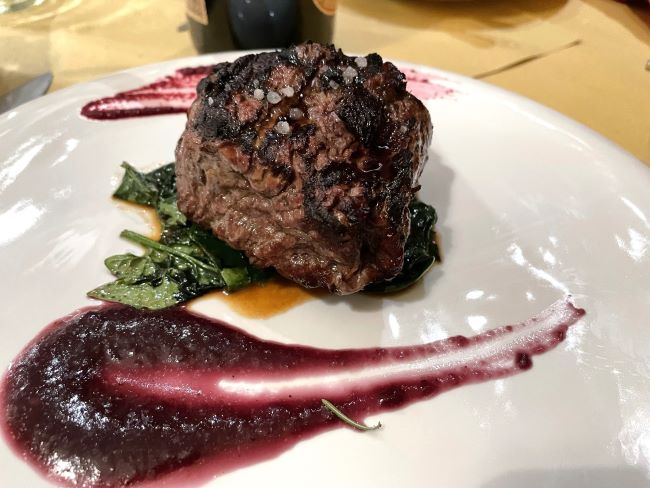
Osteria dalla Peppa
Via Vecchia, 8, 61032 Fano | www.osteriadallapeppa.it
Osteria dalla Peppa is a quaint restaurant in Fano Centro Città that serves authentic specialties local to the Marche region. Using only ingredients grown or bred in the area, the dishes at Osteria dalla Peppa are all handmade and the fresh pasta is the house speciality.

One of the local specialties offered at Osteria dalla Peppa is the cresc’tajat, a rustic handmade pasta dish made with polenta, flour and water, and served with beans.
View the menu at Osteria dall Peppa
The handmade cappalletti is another top local speciality, served on a select days of the week. Cappalletti are small meat and cheese filled “little hat” shaped pasta which are traditionally served in broth on Christmas Day and New Year’s Day in the Marche region.
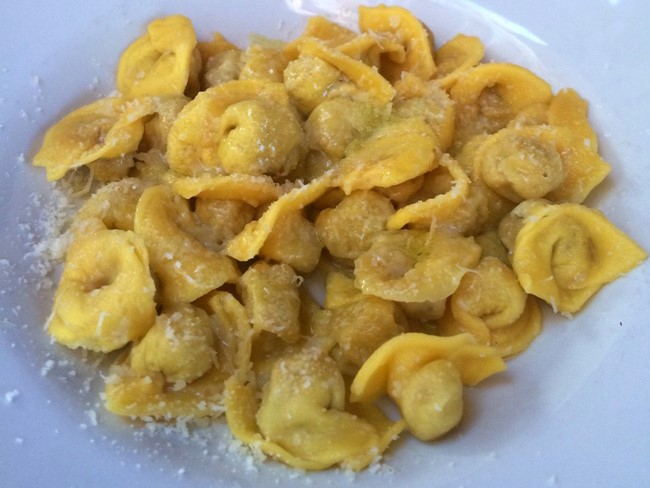
Ristorante Levante
Via Cesare Simonetti, 2a, 61032 Fano | www.levante-food.com
Ristorante Levante is the best waterfront restaurant in Fano, located on the main pier with coastal views towards Pesaro, overlooking the Fano beaches. Levante Fano is the perfect spot for enjoying a sunset dinner or special occassion in a bright, beautifully decorated setting by the sea.
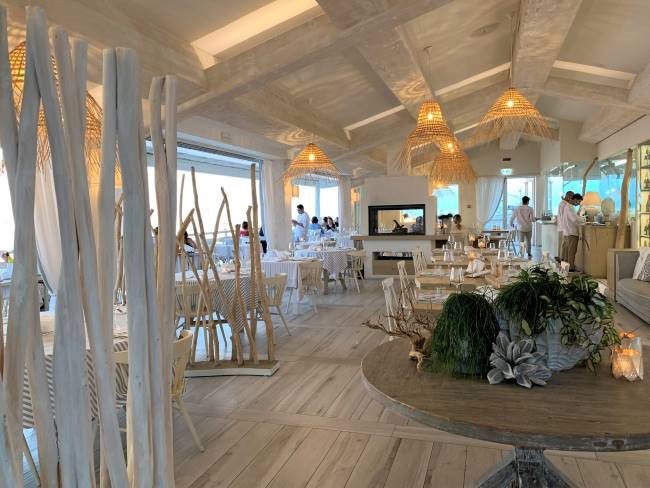
Ristorante Levante serves mainly seafood dishes, offering local specialties such as spaghettone with clams (vongole) and bottarga, traditional fish stew (brodetto), risotto with scampi, sea bream and ricotta cappalletti.

Related: Best Restaurants in Fano Italy

View the menu at Ristorante Levante
Ristorante Levante also offers a limited menu of non-seafood items, including spaghetti cacio e pepe, beef tenderloin and filet steak. Levante is one of our favourite Fano restaurants that we go to regularly, even for special New Year’s Eve dinners several times in recent years.
Ristorante Pizzeria Florida
Via Cesare Simonetti, 31, 61032 Fano | www.florida-fano.it
Located steps away from Fano’s seaside promenade, Ristorante Pizzeria Florida is great for outdoor dining in the summer months, with a large outdoor garden space and lively atmosphere.

Great for families, Ristorante Pizzeria Florida serves a wide choice of wood oven-baked pizzas, along with a menu of seafood, meat and vegetarian dishes. Florida also offers a takeaway service.
View the menu at Ristorante Pizzeria Florida
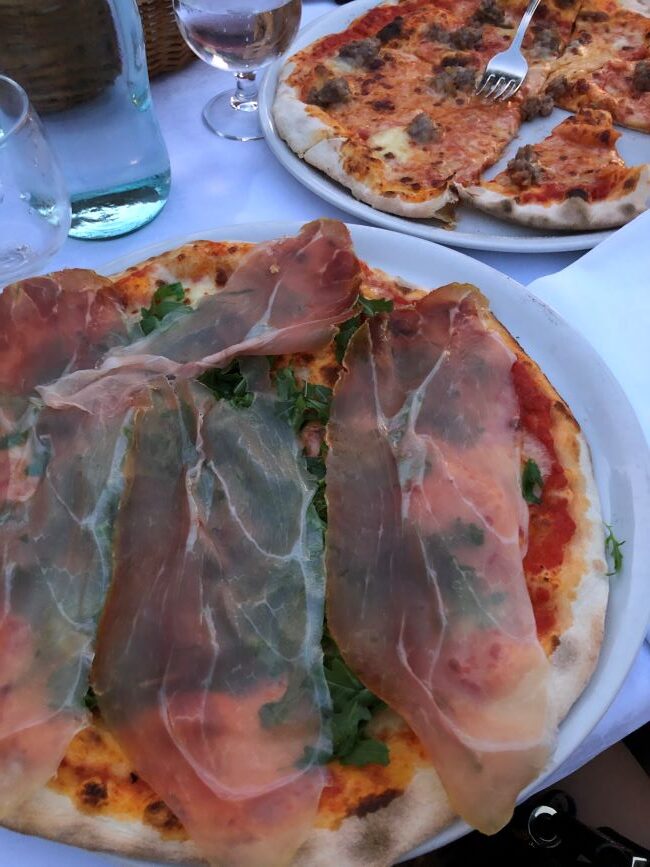
The Lido location is closed during the winter months. You can still enjoy Florida’s menu offering at its sister restaurant in the Fano town centre, Ristorante Orfeo on Corso Giacomo Matteotti.
Il Cuciniere
Via Giordano Bruno 13, 61032 Fano | www.ilcucinierefano.it
One of the top restaurants in Fano, Il Cuciniere offers innovative gourmet dishes and a unique dining experience. Characteristic dishes at Il Cuciniere include kangaroo filet, buffalo carpaccio and Wagyu tartare.

Ristorante Il Cuciniere also offers a wide range of first plates, including regional specialties such as cappalletti and passatelli. Il Cuciniere adds special touches to each dish, incorporating unique and flavourful ingredients.
Ristorante Pizzeria La Mandria
Viale Buozzi, 24/26, 61032 Fano | www.ristorante-lamandria.it
Located near the Porto della Mandria in the historical centre of Fano, Ristorante Pizzeria La Mandria serves mainly pizza, grilled steak and pasta dishes.
View the menu at Ristorante Pizzera La Mandria
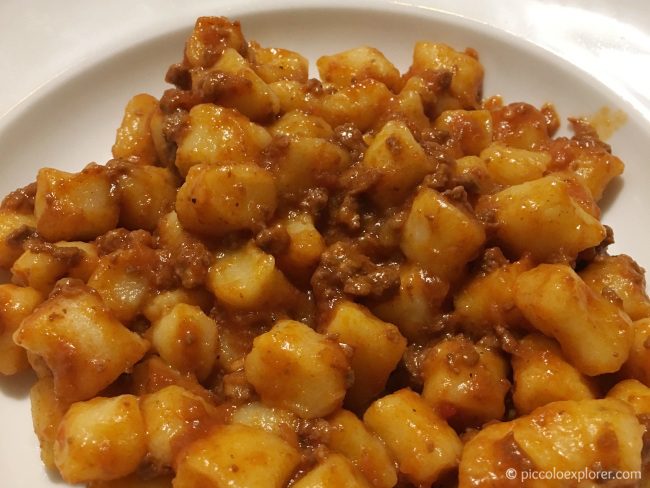
Some of our favourite dishes at Ristorante Pizzeria La Mandria are gnocchi with meat ragu, steak tagliata with roasted potatoes and the classic filet steak. Ristoriante Pizzeria La Mandria also offers a takeaway service.
Travelling to Fano Italy
The closest airport is the Ancona (Marche) Airport (AOI, formally Ancona Falconara Airport) which is about an half an hour drive from Fano. RyanAir has daily flights between Ancona Airport and London Stansted (STN).
Currently, the next closest airport is Bologna Guglielmo Marconi Airport (BLQ), just under 2 hours drive away from Fano. British Airways flies to Bologna out of London Heathrow a few times a week.
As of this summer, British Airways is also introducing flights three times a week between London Heathrow and Rimini (RMI), which is about a half an hour drive from Fano.
I hope you found this travel guide to Fano, Italy helpful! Fano is my husband’s hometown and we visit regularly to see his side of the family. I’ll keep this post updated with our most up-to-date recommendations for the top things to do in Fano, Italy with kids and the best restaurants in Fano Italy.
Europe Travel Inspiration
I hope you have found this post on the best restaurants in Fano Italy helpful! Find more tips, ideas and inspiration for travelling Europe with children in our travel guides;
Best Restaurants in Fano Italy
Best Family Hikes in the French Alps
Morzine France in Summer Guide
Chamonix France in Summer Guide
Where to Eat in Disneyland Paris
Guide to Disneyland Paris Attractions
Colmar France Christmas Markets Guide
Tips for Visiting Granada Spain with Kids
Disclosure: This post contains affiliate links, so if you do click through and make a purchase I may receive a small amount at no extra cost to you. Thanks for your support! This post was updated on 9 May 2025 with updated information and photos for restaurants in Fano.
Pin for Later – Things to Do in Fano Italy

